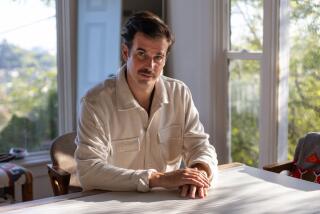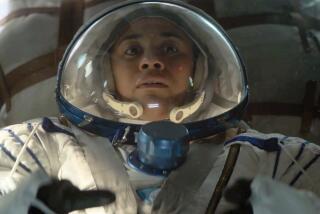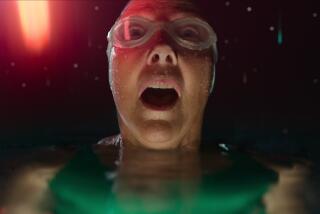Review: ‘Aquarela’ proves how to make an exciting documentary about water
A 90-minute documentary on water? Really? How exciting can that be?
You have no idea.
“Aquarela” is nothing like what you might be expecting. Yes, it’s a meditation on water in a multitude of forms, but as directed by Russia’s Victor Kossakovsky it’s an unexpectedly unnerving film that’s at least as terrifying as it is beautiful.
“I wanted to film every possible emotion that can be experienced while interacting with water,” Kossakovsky says in a director’s statement, and he means it.
But while there are tranquil views to be had, the key “Aquarela” takeaway is that we enter water’s world very much at our own risk. And when water is angry, which it tends to be, it’s best not to get in its way.
An iconoclastic filmmaker who dedicates “Aquarela” to fellow countryman Alexander Sokurov (“Russian Ark”), another uncompromising crafter of images, Kossakovsky tends to do everything himself.
He served as his own cinematographer in often risky situations and co-edited with frequent Lars von Trier collaborator Molly Malene Stensgaard.
As befits something named to echo the watercolor style of art, “Aquarela” is a poetic film that very much goes its own way. In fact Kossakovsky’s unconventional method of working meant the project was not so much planned from start to finish as something that evolved segment to segment.
Consistency comes from both Kossakovsky’s gift as a creator of images and the fact the film was shot at the almost unheard-of 96-frames-per-second rate. It will be projected in many theaters, like Peter Jackson’s “The Hobbit,” at 48 fps as opposed to the conventional 24.
While seeing a narrative film like “The Hobbit” projected that way was disconcerting, the faster frame rate is successful for “Aquarela” and adds a clarity to the outdoor visuals that is completely immersive.
Though “Aquarela” was shot in multiple countries all over the world, it’s one of the idiosyncrasies of the film that it has no interest in telling you exactly where you are at any given moment. If you don’t recognize the location, or read about it in a review, you have to go with the flow.
“Aquarela’s” opening segment is its most extended and plays out quieter than the rest of the film.
It’s set on the frozen surface of Siberia’s enormous Lake Baikal, where we observe solitary men mysteriously kneeling down and peering into the ice, as if they were worshipers in an obscure nature-loving religion.
These are not devotees, as it turns out, but people looking for a submerged auto that crashed through the ice during a drive — the normally frozen surface having thinned out weeks before it usually does. And while this search is going on, we watch another car going into the lake, with catastrophic results.
That is followed by “Aquarela’s” most artistic segment, shot largely in Greenland and focusing on a variety of images of ice, icebergs and water, including hypnotic sequences of ice chunks rising and falling on the open sea like they were so many breaching whales.
Next we are on board a 100-foot double-masted schooner as it crosses a stormy Atlantic from Portugal to Greenland. Using a camera stabilization system, Kossakovsky has been able to get steady shots of the schooner’s co-skippers steelily coping with frighteningly relentless monster 30-foot waves.
Two of “Aquarela’s” most unnerving sequences take place in the U.S., as Kossakovsky was present both for water wildly overflowing California’s Oroville Dam in 2017 and for surging floodwaters and high winds wreaking havoc in Miami during Hurricane Irma the same year.
“Aquarela’s” experience is made more intense by the visceral nature of the soundtrack, which includes the otherworldly sounds of icebergs coming apart and an edgy score by Finnish composer Eicca Toppinen, whose classical/heavy metal group Apocalyptica has been called an exemplar of “cello-metal” music.
The film ends with a visit to Venezuela’s towering Angel Falls, the world’s tallest uninterrupted waterfall. Miraculously, a vivid rainbow appears while the crew is filming, providing a comforting image in an always-impressive film that has been more about water’s raw power than anything resembling hope.
'Aquarela'
Rating: PG, for some thematic elements
Running time: 1 hour, 30 minutes
Playing: AMC, Century City, ArcLight, Hollywood
More to Read
Only good movies
Get the Indie Focus newsletter, Mark Olsen's weekly guide to the world of cinema.
You may occasionally receive promotional content from the Los Angeles Times.











